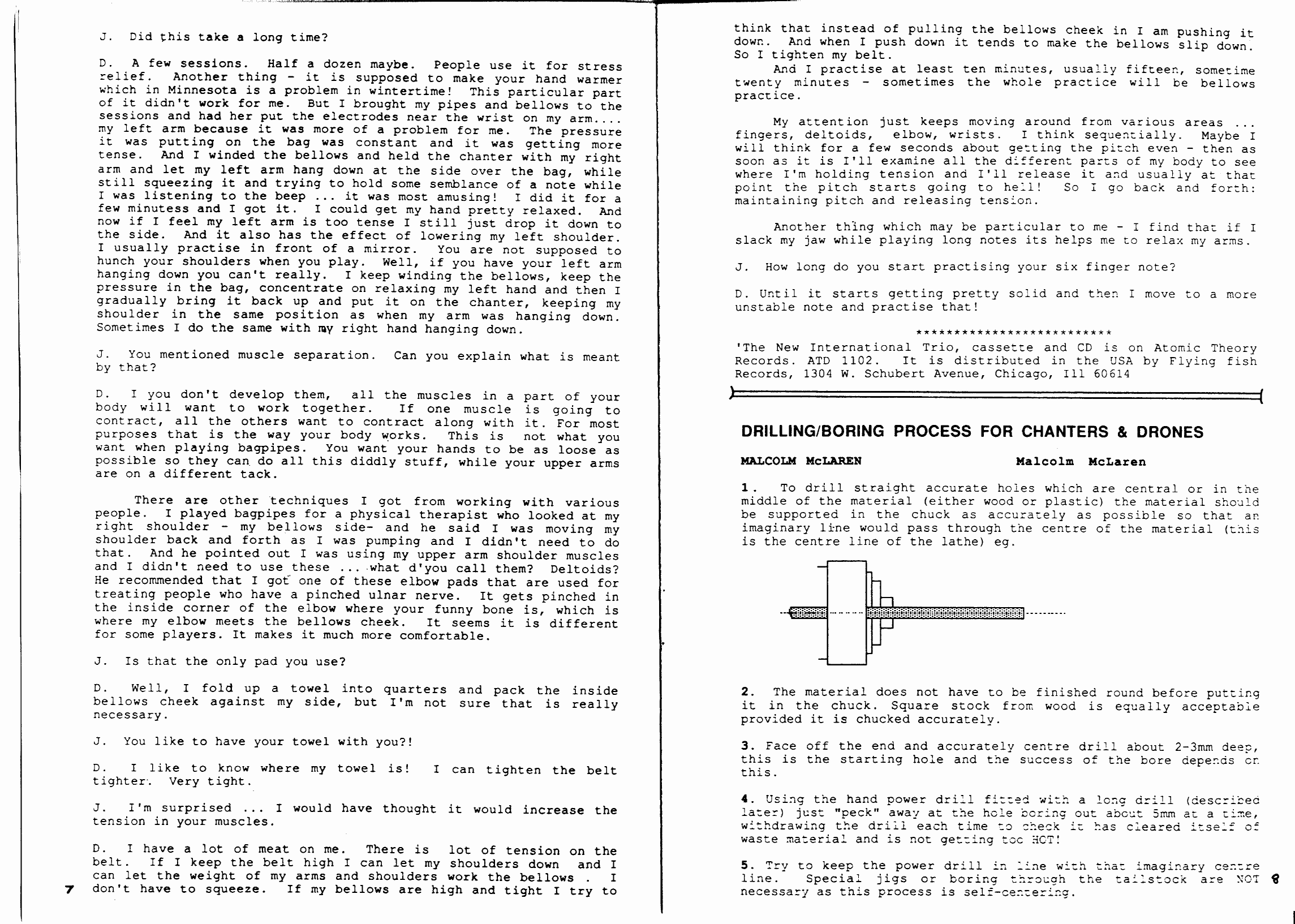Drilling / Boring Process For Chanter & Drones



MALCOLM McLAREN
- To drill straight accurate holes which are central or in the middle of the material (either wood or plastic) the material should be supported in the chuck as accurately as possible so that an imaginary line would pass through the centre of the material (this the centre line of the lathe) eg.

- The material does not have to be finished round before putting it in the chuck. Square stock from wood is equally acceptable provided it is chucked accurately.
- Face off the end and accurately centre drill about 2-3mm deep, this is the starting hole and the success of the bore depends on this.
- Using the hand power drill fitted with a long drill (described later) just “peck" away at the hole boring about 5mm at a time, withdrawing the drill each time to check it has cleared itself of waste material and is not getting too hot.
- Try to keep the power drill in line with that imaginary centre. Special jigs or boring through the tailstock are Not necessary as this process is self centering.

Notes about this process.
WHY IT WORKS!! The scientific theory which is the basis of this method is that two revolving objects or mediums that come into contact with each other such as solids, fluids or gases, will automatically self-centre PROVIDED the rotation is at different speeds. It does not apparently have to be in different directions, but obviously the lathe is spinning anticlockwise (looking at the chuck towards the headstock) and the drill is turning clockwise.
1. To cool the drill I use a spay pack of silicone (Singer Sewing Machine Co.) used to spray on cotton before sewing. It works and more importantly does not appear to stain or affect the hole. Oil can stain, water lifts the grain and some wax also can stain the wood.

I make my drills from wire purchased in 3ft. lengths from the local MODEL SHOP. It comes from the USA and is called PIANO WIRE - but is available in sizes 1/8", 5/32", 7/32" and 1/4". It is superior to what is called "silver steel” as it will not bend as easily and consequently keeps its straight shape. It obviously has carbon in it as witnessed when it is sharpened on a grinding wheel, and it will dull a hacksaw blade. The angle on the tip is a clearance angle of 5° or so.
It is ground back for about an inch in the case of the 1/8" drill -- this is for the waste material. The style is of a rifle or gun barrel reamer. The grinding of the tip should not be lower than a couple of thou greater than half the diameter. This keeps the drill "central".

The principle of the drill is that the tip or cutting edge is directed by the drill itself as it follows the hole, NOT like a twist bit which tends to be lead by its point and which will consequently wander at times.
I use a small MAKITA hand driil that turns at 4500rpm and my lathe turns at about 900rpm (in the reverse direction as mentioned earlier) .
The type of drill described has the added advantage of "polishing" the bore in the wood as it goes and consequently you get a really shiny straight bore. A sample of African blackwood bored in this way gave excellent results. Another advantage is that this style of drill appears to be unaffected by variations in the grain in the wood which means you have less wastage. Sharpening can be done by a slip stone on the leading face only, as the front tip is all that needs to be sharp.

